Mastering fuel-efficient driving






Fuel is one of the highest operating costs for fleets, representing up to 38% of the total cost of ownership. While fleet owners and managers can’t control prices at the pump, they can get better control of their fuel efficiency. Below, we outline the most effective strategies and driving techniques that can improve your fleet’s fuel efficiency.
What is fuel-efficient driving?
Fuel-efficient driving helps you reduce your fuel costs while minimising your fleet’s environmental impact. To achieve fuel efficiency, you’ll want to implement certain driving practices across your fleet. The benefits of fuel-efficient driving include cost savings, lower carbon emissions and even greater productivity. With such benefits in mind, you may want to consider driver trainings that can help your on-road team improve their critical skills.
Essential fuel-efficient driving techniques
When it comes to fuel efficiency, driving behaviour is a game changer. The following six driving techniques offer the most effective strategies to maximise your fuel savings.
1. Cruise control
Changing the driving speed frequently increases fuel consumption. Using cruise control, on the other hand, can save 5-10% on fuel. By activating cruise control as often as possible, your drivers can maintain a constant speed and avoid wasting fuel. Cruise control is best suited for driving on motorways, where road conditions and speed limits are relatively predictable and constant.
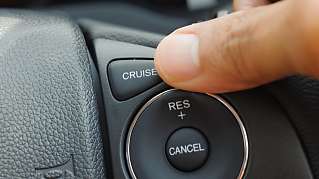

2. Reduce driving speed
The most fuel-efficient speed for passenger cars and light commercial vehicles is between 40 and 50 miles per hour (this speed range may vary depending on the vehicle). If you drive faster than 50 mph, the aerodynamic drag increases, which means that the fuel consumption also increases. That’s why eliminating speeding is one of the most effective ways to cut your fleet’s fuel costs.
3. Appropriate gear shifting
The key to shifting is to avoid over-revving, which is revving a vehicle’s engine above a normal or acceptable level of revolutions per minute (RPM). Over-revving consumes a lot of fuel. It can also damage a vehicle’s engine. Proper shifting helps keep RPMs at fuel-efficient levels while protecting engine health, which is also necessary to save fuel. A good practice is to upshift early in the acceleration process, around 2000 or 2500 RPM (on the RPM, see the ‘Advising fuel efficient driving techniques for your fleet’ report from the Department of Transport, available from Energy Saving Trust).
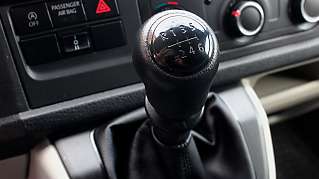
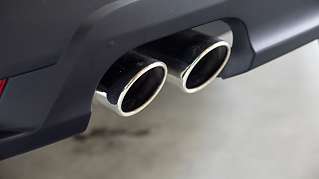
4. Limited idling
Many drivers power up their computers and refrigerators by leaving the engine running. It’s common, too, for drivers to idle while they wait for heat or air-conditioning to reach the desired temperature. Drivers should of course enjoy in-cab comfort—that’s central to their well-being on the road. It’s a matter of balance and smart alternatives. As simple actions like parking in the shade and using curtains can help control in-cab temperatures and reduce idling by 20%.
5. Coasting
Coasting is releasing the accelerator pedal while leaving the vehicle in gear, gradually decreasing the speed through the engine. No fuel is consumed since no fuel is injected into the engine. Coasting therefore helps a great deal in fuel-efficient driving, as the driver anticipates and responds to circumstances. In approaching congested traffic or pedestrian areas, for example, drivers can release the accelerator and coast. If it isn’t necessary to brake, the driver can then recoup vehicle speed without much acceleration and fuel use.
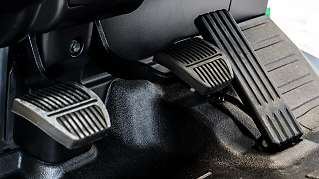
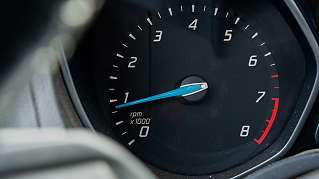
6. Gradual acceleration
Rapid, aggressive acceleration can significantly increase fuel consumption — by roughly 40%. When a vehicle accelerates more steadily, the engine doesn’t have to work so hard to maintain the increase in speed. Which translates into needing less fuel. You can get far with improving fuel efficiency by practicing smooth and gradual acceleration. Whether you’re running a fleet of one vehicle to a hundred, the savings can make a huge difference for your bottom line.
Empowering drivers to adopt fuel-saving driving techniques
Strong collaboration with your drivers is essential—they’re the ones behind the wheel. Engaging them through trainings and showing appreciation for their fuel-saving contributions can be effective.
- Coaching and training - A performance tool can make a huge difference in empowering your drivers. With our OptiDrive 360, fleet managers can analyse fuel-consumption patterns historically and in real time. They can also spot trends on an individual driver basis, making it easy to determine which drivers could improve with personalised coaching or even group trainings around fuel-efficient driving. OptiDrive 360 also sends real-time feedback to drivers, enabling them to adjust their driving behaviour in the moment.
- Incentive programmes - Showing drivers appreciation can go a long way in encouraging them to practice fuel-efficient driving. Does your fuel consumption data show that certain drivers are reducing their fuel use? Be sure to acknowledge their efforts. If you have a rewards programme for drivers, consider offering gifts or bonuses for those who meet your fuel-saving criteria.
- Optimised planning - According to information from the TomTom Traffic Index, traffic jams affect 24% of all driving time. This means that each driver is unnecessarily stuck in traffic jams for an average of eight days a year. That adds up to a whole lot of fuel spent on idling. Even the most experienced drivers can’t prevent idling in traffic jams. Help them avoid congested roads with optimised route planning based on reliable GPS and updated traffic information.
- Regard them as valued stakeholders - Drivers understand the importance of keeping a company viable (they rely on a steady paycheck, after all). Let them know how much fuel-efficient driving matters to the success of the fleet business. Brainstorm about fuel-saving possibilities with them. Since they’re behind the wheel every day, they may have surprising insights about driving behaviours or in-cab power use to share.
Improve your fuel efficiency
Discover how to save fuel and cut operational costs — book a demo






Your consent is required
In this section, external content is being embedded from .
To display the content, your consent is required for the following cookie categories:
- Targeted Advertising
- Analytics & Personalization
- Essential
For further details, please refer to our privacy policy. If you are interested in how ###vendor_name### processes your data, please visit their privacy policy.












